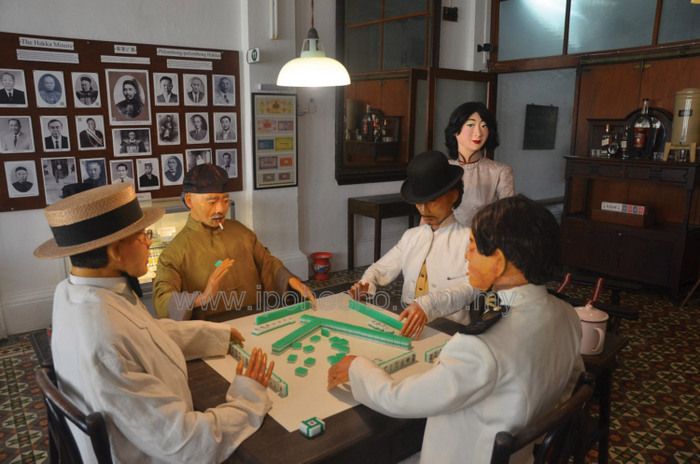

By SeeFoon Chan-Koppen


Managed by Ipoh World Sdn Bhd (ipohWorld) and opened in February 2015, after extensive restoration, the museum tells the story of the miners’ club, founded by philanthropic tin miner Leong Fee in 1893. His original club was in a double-storey building on the same site as today’s three-storey museum which replaced it in 1929.
The new museum quickly gained international fame, appearing on an Australian travel website after only two months of operation and becoming Ipoh’s number one ‘Things to do’ on TripAdvisor just three months later. A position it still holds today despite the increasing number of attractions in Ipoh and its surroundings.
This is a majestic building with European architectural overtones which dominates the skyline in Jalan Bijeh Timah (Treacher Street) and the glorious name Han Chin Pet Soo – Entertainment and Leisure Villa.


From the very beginning this was not an ordinary club. Membership was restricted to those of the Hakka dialect group, who were extremely rich and also friends of Leong who paid for it all. Consequently, the club ran without any of the rules and regulations imposed on the ‘White Man’s Club’ (Ipoh Club) founded the same year.
For 121 years the club was a place of mystery and intrigue to anyone other than the membership. In the early 1900s large black cars would draw up at the steps and a solitary Chinese would be allowed to enter before the door was slammed shut. No women were ever seen entering those double doors and any request by a non-member to enter would be curtly denied. However, if one listened carefully you could hear the clacking of mahjong tiles. Surely they were not gambling! But they were, for, in 1897 permission had been granted for members to gamble on the premises. The letter was signed by the Kinta magistrate.


But in those far-off days, gambling was not their only vice for to the affluent Chinese who, on average had four wives, ‘Entertainment and Leisure’ meant much more. ‘Dancing girls’ (prostitutes), particularly Japanese, were popular visitors to the club through the back door. Then there was opium smoking, alcohol and ‘Triad’ (Secret Society) meetings on the premises. After all that there was always time for a meal in the dining room cooked to order by the resident maid.


But what of the museum today? Having been open to the public for 34 months it has been a great success. Around 42,000 visitors have taken the one hour plus tour which can be conducted in Mandarin, Cantonese, Malay or English. The museum is open from Tuesday to Sunday with up to eight tours per day and the normal maximum tour size is 40 pax divided into two groups. Extra numbers or special arrangements may be accommodated by arrangement in advance. The best way to guarantee a place on the tour of your choice is to use the very simple booking system at www.ipohworld.org/reservation.


Of course none of this could be achieved without support from the media who have really done their best to bring the museum to the notice of the general public. To this end Han Chin Pet Soo has been featured in all the mainstream press in Malaysia. Astro and the editors of major travel magazines have also done their bit to spread the word. Also, there are many pages on Google that speak well of the museum, while a glance at YouTube will highlight short videos made by supporters.
Sponsored since inception by Kinta Properties, it is clear that the museum is a great success. The company philosphy is that no one should be turned away because they cannot afford an entrance fee for a place on the tour. Heritage belongs to everybody and the more they are exposed to it the more they will care. Thus the admission charge is scaled with tour parties donating RM10 to cover the cost of additional guides and facilities whereas private visitors are asked to donate RM10 or whatever they can afford after enjoying the tour and taking their souvenir photographs of Ipoh’s top attraction. Whatever is collected goes towards the running and maintenance of this grand old building.


As for Commander Ian Anderson who has put his heart and soul into the conservation and refurbishment of the museum, leaving no stone unturned in his search in every nook and cranny all over Perak for just the right artefact, the perfect accoutrement for setting a scene or finding skilled craftsmen to restore period pieces, Han Chin Pet Soo was a labour of love and he wishes that more Perakeans would share his love of heritage conservation and come forward to help preserve Perak’s wonderful heritage.




